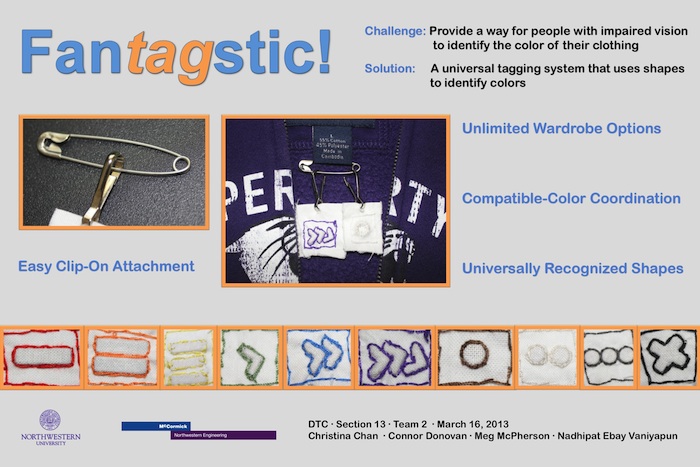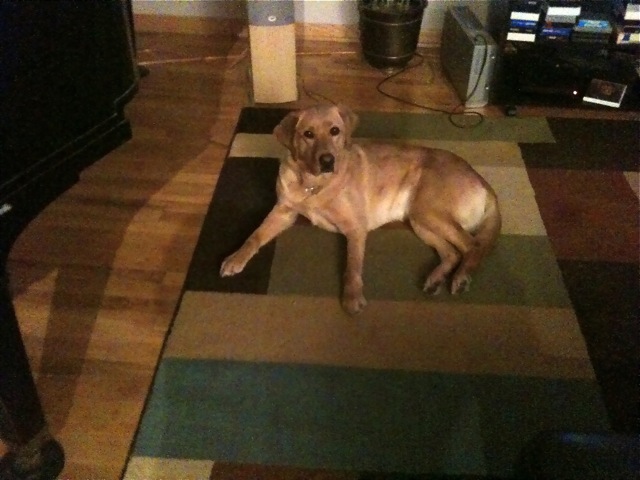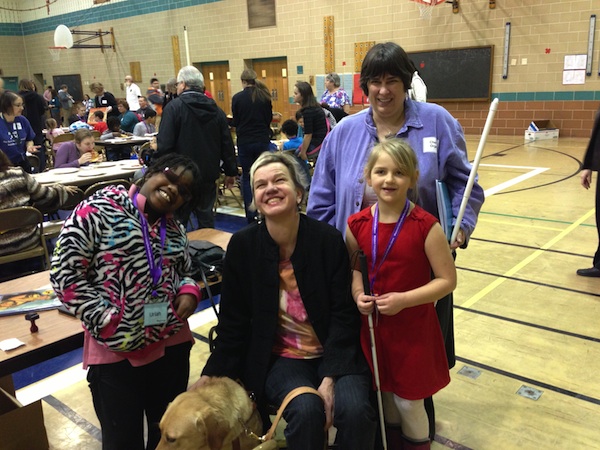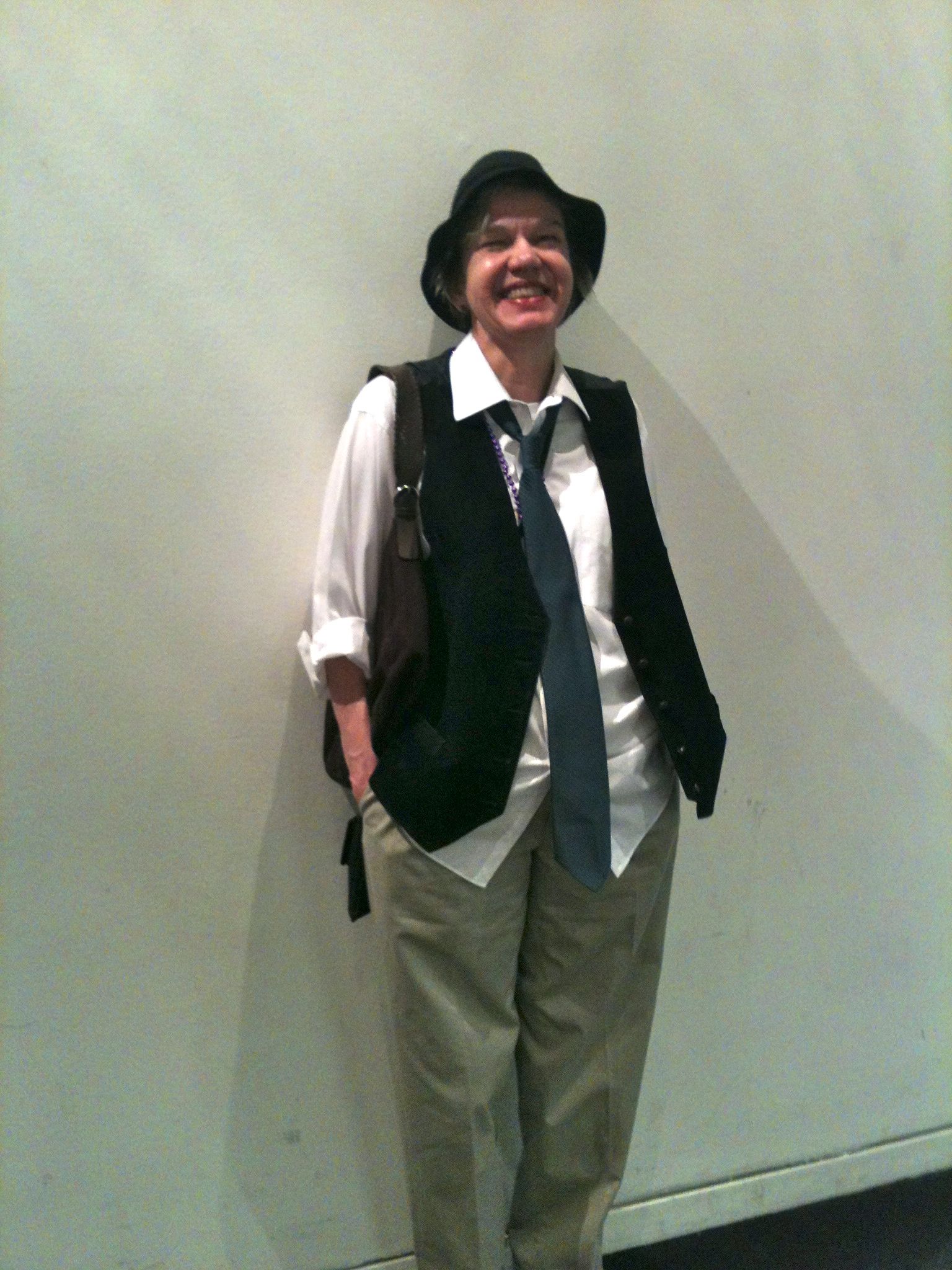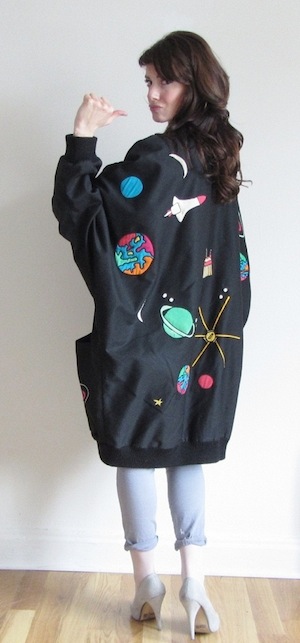Fantagstic!
March 18, 2013 • 13 Comments • Posted in Beth Finke, blindness, Braille, technology for people who are blind, UncategorizedIf you liked that guest post an engineering student wrote for the Safe & Sound blog last month, you’re gonna love this update on what Ebay and his classmates came up with as ways I can keep track of the colors of my clothes. Freshmen in other Design Thinking and Communication class sections were working on other projects for people with disabilities at the same time, and here are some examples
- A man who uses a wheelchair wanted an easier way to fold up the footrests when it came to transferring into a car or a regular chair
- A man with cerebral palsy was looking for a more efficient way to pull his trousers up on his own
- Occupational therapists asked for a device that might encourage their clients with Parkinson’s disease to do finger exercises on-the-go
- The Rehabilitation Institute of Chicago hoped a class could figure out a way for clients with visual impairments to know how fast (and at what speed) they were walking on exercise treadmills
- a woman who uses a wheelchair and enjoys outdoor concerts was looking for a way to slide from her chair onto the lawn, then get back into her chair again on her own when the concert was over.
Ebay’s engineering class divided into four different groups to tackle my color identification problem, and Whitney and I traveled to a Design Expo at Northwestern Saturday to hear
all of the students present their completed projects. Sixteen students had visited our apartment in February with prototypes ranging from carabiners to iron-on tags to QR codes that my talking iPhone could read to me, and seeing (okay, touching) what these four teams had come up with in the end made me glad I’d come out of the closet about my wardrobe woes.
Right now I put a safety pin in the tag of anything I own that is black, and a paper clip on anything white. I wear other colors, too, and I memorize what color those other things are by the feel of the clothing. On their February visit, the students watched me go through my closets and asked lots and lotss of questions. In the end all four teams expanded on my tried and true safety-pin method, each team inventing different things to hang from the pin to correspond to the color of the item.
Ebay’s team came up with acrylic shapes on cloth tags called “Fantagstic!” They reasoned that cloth tags would be lightweight, so I could use two or more at a time to identify multi-colored items. The tags another team came up with were laser-cut acrylic shapes called “Depindables”. The tags all the teams came up with had been tested to withstand high temperatures in the washer and dryer. “Tag Team” was the only team to use traditional Braille code on its tags – the other teams learned from research that a majority of people who are visually impaired do not read Braille. Ebay’s team designed its own palettes of shapes (lines, S’s, C-shaped arrows, dots, corners, and triangles) that they’d tested on me earlier to confirm the shapes were easy to feel and differentiate from each other. The “Code of Many Colors” team used small glass beads on the safety pin: one bead means black, two beads mean white, and so on. Judges from engineering firms were on hand to decide on winners for each proposal, and the winner for mine was…drumroll, please…Tag Team!
The Tag Team system is more than a label to safety-pin onto my clothes. It’s also a way to organize my closet and laundry. Tag Team includes a laundry hamper that holds a number of mesh bags, each bag with a tag attached that corresponds with a single color. They figure doing laundry will be easier if I don’t mix all my clothing in the hamper, only to have to resort it all again when the wash cycle is over. “All you do is put your clothes in the bag it belongs in, take the bag out, tighten the string, and throw the bag in the washing machine.”
What about times I’m too lazy to put dirty clothing into the proper mesh bag, you ask? “No worries,” said Tag Team with pride. With the Tag Team system, everything you wear has a tag pinned inside of it. ”Wake up the next morning, feel the tag on the shirt you wore the night before, and you’ll know which bag to put it in in your Tag Team hamper.”
I had to hand it to ‘em. But if you ask me, all the teams at the design expo were winners. These kids are just freshmen, and not only have they learned about design process, but also how much it can mean to work together to help people with unusual, unique, and unmet needs. I was the biggest winner of all, though: I got to work side-by-side with these talented and thoughtful young people, and when design expo was over Saturday afternoon, I walked out with custom-made prototypes of all the tags!
Folks I talked to Saturday from the Segal Design Institute at Northwestern University told me they’re looking for new project proposals from people with disabilities and organizations who work with us. If there’s something you need and you live in the Chicago area, I encourage you to submit a proposal soon.
